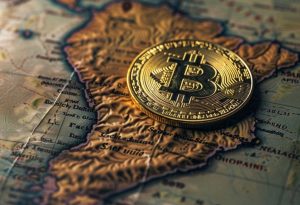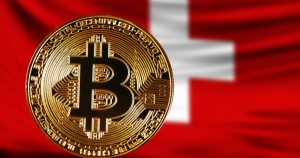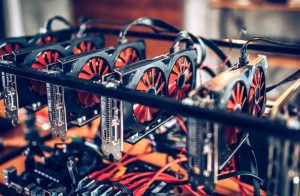Inflation – 2 scenarios and what they mean for BTC and crypto
7 min readTable of Contents
In March, inflation in the eurozone climbed to another record high. 7.5 percent Goods and services were more expensive in the euro zone compared to the previous year. In Germany, the inflation rate was 7.3 percent. This was announced by the statistics office Eurostat in a Message on Friday April 1st with.
The inflation data exceeded the experts’ expectations by far. A survey of economists by the US news agency Reuters had an inflation of approx. 6.6 percent forecast. Rising energy prices had the greatest impact, rising by around 45 percent over the year. But groceries also saw a decent jump in prices. They increased by almost five percent compared to February.
The persistently high inflation rates and an almost certain recession have meant that the word stagflation, ie high inflation coupled with a recessive economy, has been increasingly used in recent weeks. In the meantime, two camps with different economic forecasts can be identified.
Is the recession here yet?
The fact that the growth prospects are deteriorating massively, especially in the USA, is becoming particularly clear on the bond market (bond market). In this context, there is often talk of a flattening of the yield curve. What does that mean? Here’s a brief explanation: Figure 1 shows the difference (spread) between 10-year and 2-year US Treasuries. When this curve falls, the yield curve is said to flatten as interest rates on shorter-dated bonds rise. A dip below the black line implies an inverted yield curve. As you can see at the bottom right of the figure, this indicator sounded the alarm for the first time since 2019 on Friday, April 1st. In the past, an inverted yield curve has been a relatively reliable indicator of a recession in the months that follow (see Figure 2).
All well and good, but what are the concrete consequences? It is worthwhile taking a brief look at the business model of the banks. Here there is the concept of the so-called maturity transformation. In short, this means the conversion of short-term investments into long-term loans. However, if interest rates rise at the short end (for short-term bonds), banks can no longer get money so cheaply, which they can pass on as credit in the long term at higher interest rates. This in turn leads to rising interest rates, for example for small loans, which is finally having a negative impact on the economy.
Another indicator that is increasingly pointing to a recession is the University of Michigan Consumer Sentiment Index. This essentially reflects the consumer mood of private households in the USA. As can be seen in Figure 3, it is currently trading at a ten-year low of 62.8 points. The last time the indicator was so low was at the end of 2011. In the meantime, the index has even fallen below the low from the Corona crash in 2020.
Scenario 1: stagflation
A possible scenario, which is therefore played out on the markets, is that of what is known as stagflation. Prof. Dr. Gunther Schnabl, Professor of Economic Policy and International Economic Relations at the University of Leipzig and Head of the Institute for Economic Policy, had already emphasized at the beginning of March that he considered stagflation to be quite realistic:
I think stagflation is likely for two reasons. Firstly, state intervention in the economic cycle is increasing, which is increasingly slowing down growth and favoring economic slumps. Since the negative economic consequences of state intervention are cushioned with the help of the central bank, the surplus of money over goods is further increased, so that inflationary pressure increases.
Gunther Schnabl
This opinion is also shared by other experts, such as Prof. Dr. Thomas Mayer, Founding Director at Flossbach from Stork Research Institute. After stations at Goldman Sachs, Solomon Brothersto the international Monetary Fund and the Institute for World Economy in Kiel, the economist was chief economist at the for a long time Deutsche Bank Group. Due to rising wages, Mayer believes that a stagflation scenario is almost inevitable:
We have already experienced such a phase since the end of the upswing after the end of the nationwide lockdown. With the start of the Ukraine war, the stagflationary impulse became even stronger. With wages now in all probability rising, a prolonged period of stagflation is to be expected.
Thomas Mayer
How BTC would do in such an environment is not yet foreseeable. Historically, it is primarily the asset classes precious metals, commodities and real estate that perform well in stagflation. A dream scenario for many would be, for example, that BTC would develop in a similar way to gold in the stagflationary phase of the 1970s. Between 1970 and 1980 the price of gold exploded from around US$36 per troy ounce to over US$600 per troy ounce in 1980. Mayer is fundamentally positive about BTC’s performance in a stagflation environment: “As long as these (the central banks) keep real interest rates in negative territory to relieve the debtors at the expense of the creditors, BTC and gold should be in demand,” says Mayer.
In view of the persistently high inflation rates and a crisis in the economy, stagflation initially seems plausible. However, at this point in time, the relative stable unemployment rate and the solid situation among the companies so far.
Scenario 2: Inflation will cool down
One of the most prominent representatives of the second thesis is certainly star investor Cathie Wood. She thinks that inflation will play a much smaller role in the coming years than the market is currently assuming. On Twitter, the managing director of Ark Invest critical of the Fed’s planned rate hikes. The US central bank is “playing with fire” because many indicators (including the Consumer Sentiment Index) have already reached levels similar to those seen during the 2008 financial crisis.
In contrast to many proponents of the first scenario explained above, Wood had repeatedly emphasized over the past few weeks and months that, from her point of view, several factors would rather speak in favor of deflation. The investor sees technological progress as one of the key drivers. The innovations resulting from this would have a strong deflationary effect over the coming years, since they would enable enormous advances in productivity, which in turn would probably lead to falling prices for the end customer.
In addition, Wood believes that many companies have placed large orders during the Corona crisis to be able to meet the increasing demand as many economies open up. Therefore, according to Ark Invest, there could soon be an oversupply on the market, which would also unleash deflationary forces.
The former sees it similarly Goldman Sachs-Hedge fund manager and founder of Real Vision Finance, Raoul Pal. Pal is now considered a real force in the macro and crypto space. He also believes that inflation will not go through the roof. In an interview on the video platform Real Vision, which he founded, last Friday, April 1, the macro expert gave an update on the current state of the economy.
Pal can be located in roughly the same camp as Cathie Wood. His thesis: The economy in the USA could have cooled down extremely by the summer of this year or be in a recession. Due to a demand destruction, inflation will also come back, which in turn could put the US Federal Reserve in a more wait-and-see attitude, i.e. no further interest rate hikes. In addition, Pal predicts that commodity prices have now plateaued and are purely demand-driven. Ergo: The former hedge fund manager does not believe in rampant inflation.
Pal substantiates his thesis with the explosive rise of China after the dot-com bubble in 2000. The massive economic boom in the country with a population of 1.2 billion people brought with it an enormous demand for raw materials. But the average rate of inflation between 2000 and 2008 was just 3 percent, according to the ex-Goldman executive.
Both Wood and Pal are convinced that the US economy will slide into recession. However, they do not believe that inflation will continue to rise in the medium to long term and that central banks, most notably the Fed, will not get very far in their rate hike cycle as bond markets have already priced in some and a recession due to sharply falling rates demand is almost inevitable. If so, it’s rather bullish for risk-on assets – which both Wood and Pal currently include BTC in.
Conclusion
The crucial question should be: How will BTC be treated by the market in the future? Should this be traded similarly to gold, a stagflation environment would probably be the ideal breeding ground for a price rally. Should it be viewed as a risk-on-asset, there may already be some bad news priced in here. After all, the market had had to price in several interest rate hikes by the Fed and a war in Ukraine in the past few weeks and was still able to remain relatively stable compared to many stocks. According to Raoul Pal, both the Nasdaq 100 technology index and BTC have already bottomed out. How things will continue from a macroeconomic point of view, however, is anything but clear.
From McDonald’s Clerk to One of the Richest in the World, Binance’s CZ Story







